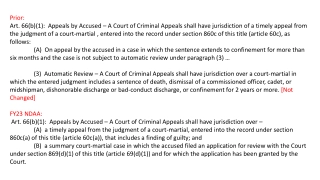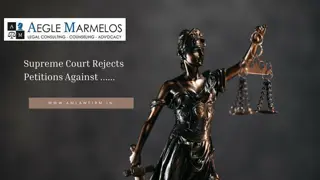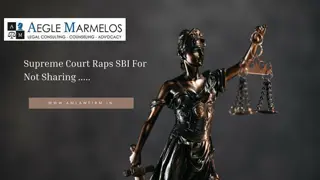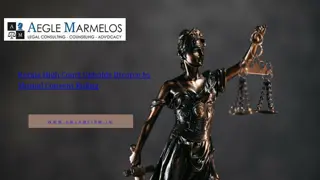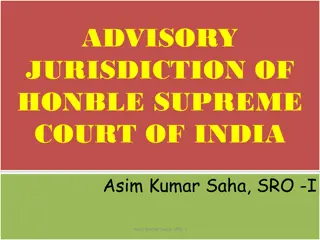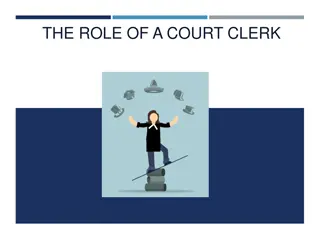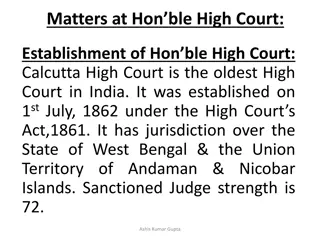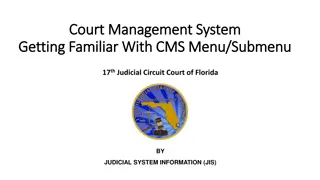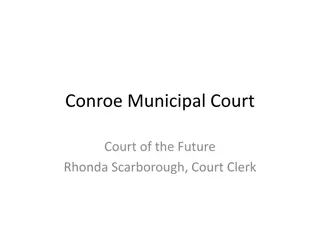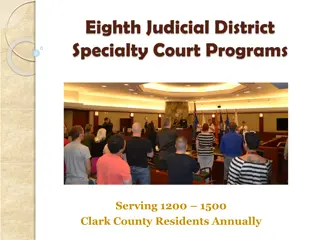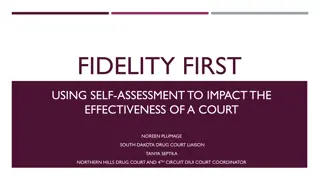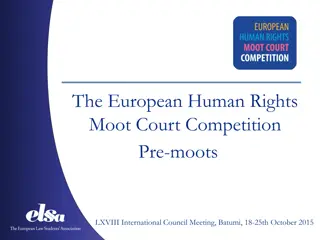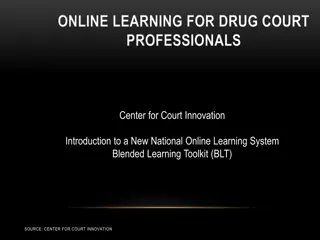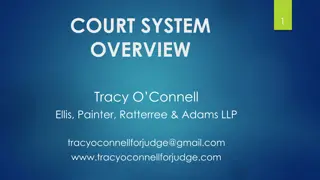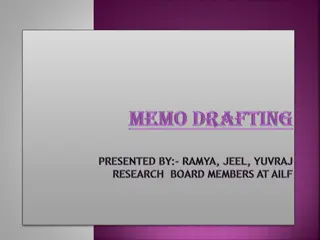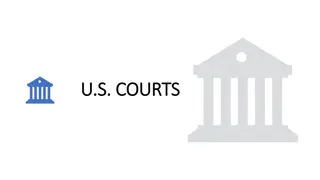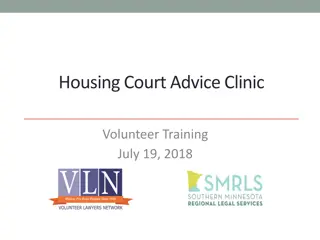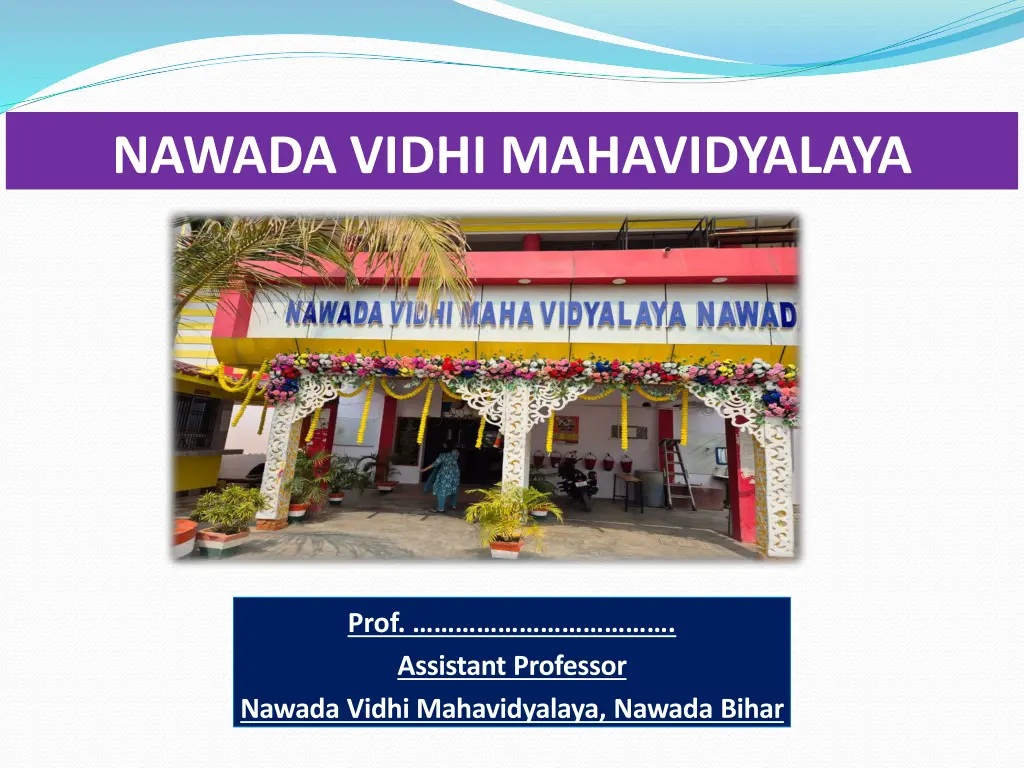
Moot Court Etiquette: Dress Code and Conduct Guidelines
Dive into the world of moot court with an overview of oral arguments, attire guidelines, court entry protocols, and addressing judges. Understand the importance of seeking permission, stating contentions, and presenting facts effectively to enhance your moot court experience.
Download Presentation

Please find below an Image/Link to download the presentation.
The content on the website is provided AS IS for your information and personal use only. It may not be sold, licensed, or shared on other websites without obtaining consent from the author. If you encounter any issues during the download, it is possible that the publisher has removed the file from their server.
You are allowed to download the files provided on this website for personal or commercial use, subject to the condition that they are used lawfully. All files are the property of their respective owners.
The content on the website is provided AS IS for your information and personal use only. It may not be sold, licensed, or shared on other websites without obtaining consent from the author.
E N D
Presentation Transcript
NAWADA VIDHI MAHAVIDYALAYA Prof. . Assistant Professor Nawada Vidhi Mahavidyalaya, Nawada Bihar
An Overview Oral Arguments
An Introduction A moot court is a simulation of a real court to give students an insight on dealing with a legal problem and how to present a case in front of a judge. Proceedings in a court room follow a set pattern of conduct. Right from the attire to the language and the way we speak and behave follows some norms which are covered in this presentation.
THE ATTIRE In order to argue upon a case in the court room, one needs to don the specified court uniform. A standard court uniform includes - Black suit with black tie, white shirt and black shoes. No unnecessary accessories. No ID or any object which reveals identification of your college/university.
HOW TO ENTER A COURT Bow before the judge as soon as you enter regardless his attention or presence. The petitioner has to take left seating and respondent has to take right; facing the judge (unless a contrary is arranged). If judge enters the court room, stand up, when judge reaches his chair, bow before him and take your seat only when the judge is seated. When the judge indicates then the first counsel must approach the podium do so and bow before the judge/bench before starting the arguments.
You should seek permission to address the judge or the bench the Petitioner [or respondent] seeks permission of the Hon ble court to address the bench as Your Lordship or Your Honour "May it please the Court, my team code is _____, counsel for the Petitioner [or respondent], in the present case ________" It is very important to remember to say, "May it please the Court" it is simply a well-established formality of moot court competition, to which you should adhere.
Mention the contentions/ issues/ submissions to be taken up by you. If the arguments are divided, then also mention the contentions taken up by the co-counsel Your Lordship the petitioner [or respondent] will specifically be dealing with issue _________. Issue ________ will be dealt by me and my co- counsel will deal with issue________ Mention the facts of the case. With Your Lordship's permission may the counsel proceed with the facts of the case If the judge is already aware of the facts in that case seek permission to proceed with the issues If your Lordship is well versed with the facts of the present case, then may the counsel seek permission to proceed with the contention or issue ___ of the case
Avoid saying Thank You; instead use Highly Obliged or ..much obliged Seek permission of the judge/ judges to proceed further. This can be done by mentioning- 'The counsel humbly seeks the permission to proceed with.... Don t use the same line every time you seek permission. Use different ways to do this. May it please your Lordship . With the due permission of Your Lordship . The counsel seeks permission Never say, 'May I carry on... Avoid using slangs such as yeah, yup, okay, all right .
Dos and Don'ts When judges are consulting amongst themselves, then a counsel should never interrupt and wait for judges to instruct to proceed further with arguments. Never interrupt a Judge when he is asking or clarifying a point. Never point a finger or behave arrogantly or be hostile towards opposite party.
Dos and Don'ts If a judge asks a "yes" or "no" question, answer first with "yes or "no" -- then elaborate. Reply with, "Yes, Your Lordship, in fact ...," or "No, Your Lordship, rather ...." Never speak over a judge. When a judge starts talking, you should stop talking immediately, even if he or she has interrupted you mid-sentence (or even mid-word).
PERSONAL OPINION NEVER give your opinion. Avoid phrases such as 'I think' and 'I believe'. Instead, say 'I put it to the court that', 'it is submitted that' 'the petitioner/respondent contends that'. My Lord/Lady, I submit that /In my respectful submission If it pleases the court, I would like to offer my first/second/third/etc submission This point/case does cast some doubt/light on I accept the point that , however With your Lordship s permission, I would like now to The judge does not care about your opinion and will not hesitate to tell you so.
JUDICIAL INTERVENTION When asked a question by a judge, it may be helpful to pause before answering. Respond with phrases such as.. I am obliged to your Lordship/Ladyship With great respect, my Lord/Lady That is indeed an issue which must be addressed my Lord However if you are not able to answer the question or wish to complete the argument, then use phrases like I will come back to that or My Lord I will answer that directly or I will satisfy your Lordship I must answer your Lordship s query, but your Lordship will grant me the indulgence to come back to my principal submissions thereafter Your Lordship the counsel will be dealing with the point in issue __ The point raised by Your Lordship will be answered by/will be dealt by my co-counsel
CITATIONS Citing cases is crucial to mooting: one of the criteria on which you will be assessed is your use of authorities. One method of citing is.. May I direct/draw your Lordship s attention/the court s attention to the case of _______ as decided by the Hon ble Supreme Court[ or High Court of ____] in the year _____ states ...
Calling the Co-counsel When the first counsel is finished with his argument then he should ask permission to call his co-counsel to further carry the arguments. The phrase which is advice to call upon counsel is The counsel humbly seeks permission to call upon the co- counsel who will be dealing/continuing with .. When permission is granted, bow before the bench and take your seat. While addressing your opponent use phrase like my learned friend on behalf of petitioner [or respondent]
PRAYER Seek permission of the court to proceed with the prayer While submitting the prayer the members of the teams should stand up Use phrase it is humbly prayed before this Hon ble Court After the prayer is complete take leave of the court or take your seat after thanking the judge.
POINTS Stand straight, do not pose or slouch. Face the judge. Restrict hand movements. Keep an eye on the time throughout your submissions and be flexible in your approach. The judge's questions may take you off on a tangent and you need to be prepared for this. Make sure to always maintain eye contact with the Judge. Pay full attention to what the Judge is asking. If your fail to understand a certain point the seek clarification.
POINTS If the counsel is unaware of the answer then say so, use phrase like the counsel begs negligence May the counsel be excused for his/her negligence Always be courteous and do not show signs of irritation or frustration by rolling the eyes or sighing. Be confident in your demeanor. Speak slowly and clearly. Do not speak so fast that the judges are unable to comprehend your submissions. Do not prepare a fully rehearsed speech. Jot the material points that you need to cover.
POINTS Do not make broad claims or bluff. Know exactly how far you can push your assertions. Think about your volume. Be sure you can be heard by the judges. Use your tone and volume to emphasize key points in your argument or key words in a phrase. Avoid verbal ticks and fillers . Do not say oh, um, uh, or similar words; likewise, do not fill every pause with your honor/lordship. Avoid repeatedly beginning sentences with well, however, or and.
Tips for the researcher All the above tips are applicable mainly to Speakers but researchers should also observe some of court manners. Court manners are no exception to researchers, they also play significant role in presentation. Speakers require information for them as well as passing information to judges. The information should be passed swiftly and this transit should be rapid and cautiously done.
Passing of information can be bifurcated into two To judges If you are sure to pass/quote the information such as annexure, books, journal, bare acts; then supply it to the court masters beforehand. If the oralist requires some material to be passed then pass the same to court master swiftly. To speakers Use stick notes to convey any information to Speakers. Do not come in between the counsel and bench, just bend slightly and stick it to podium without interrupting the counsel. Use bold marker to write notes so that the Speakers can read it easily. Never speak to Speakers or engage in any conversation.

